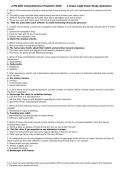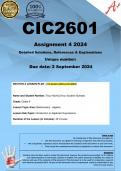Prüfung
PN VATI Comprehensive Predictor 2020 Green Light Exam Study Questions
- Kurs
- Hochschule
PN VATI Comprehensive Predictor 2020 Green Light Exam Study Questions 1. Which of the instructions should a nurse include in the teaching for a pt. who had removal of a cataract in the left eye? a. "Forcefully cough and take deep breaths every two hours to keep your airway clear." b. "...
[ Mehr anzeigen ]




